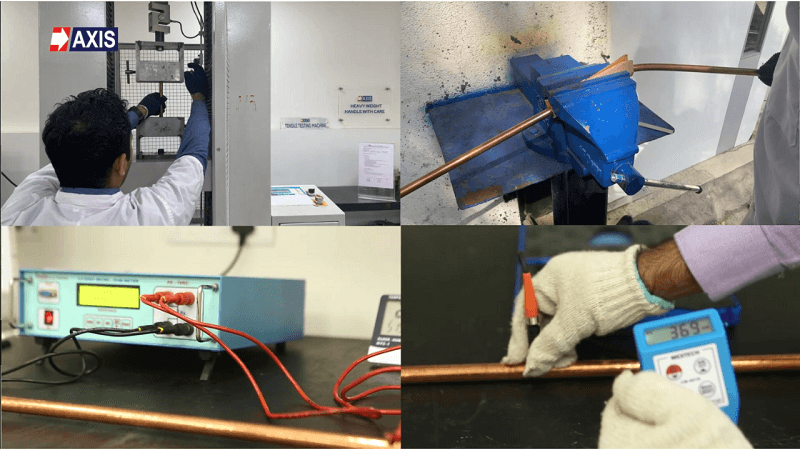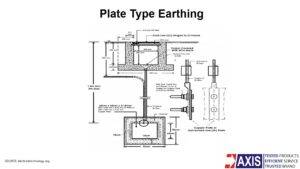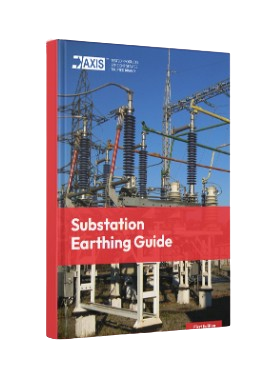In this article, we will explore how to ensure the quality of your earth rods. By the end of this blog, you will have a thorough understanding of the necessary electrical and mechanical tests for earth rods, including the six essential tests to guarantee their effectiveness and durability. We will delve into each test in detail, offering practical tips and guidance on how to conduct them efficiently.
By the end of this article, you will be fully versed in the electrical and mechanical tests required for earth rods, which include:
- Resistivity Test
- Coating Thickness Test
- Bending Test
- Adhesion Test
- Tensile Test
What are Earth Rods?
Earth Rods are a type of earth electrode that are buried directly in the ground to facilitate the flow of fault currents toward the ground. In North America, these rods are commonly known as Ground Rods. Here are some technical properties that are essential for Earth Rods.
- Electrical Resistivity: This is the measure of how strongly a material opposes the flow of electric current. A low resistivity indicates a material that readily allows the flow of electricity.
- Corrosion Resistance: Earth rods should be highly resistant to corrosion. When in contact with soil, rods can degrade over time due to various chemical reactions. Corrosion can significantly reduce the effectiveness and lifespan of the earth rod.
- Mechanical Strength: Earth rods need to be strong enough to be driven into the ground without bending, breaking, or getting damaged. This is especially important when the rod has to be installed in hard or rocky soil.
- Conductivity: The rod must have high electrical conductivity to ensure that electrical charge can be effectively discharged into the ground.
Different Types of Tests
1) Electrical Resistivity Test
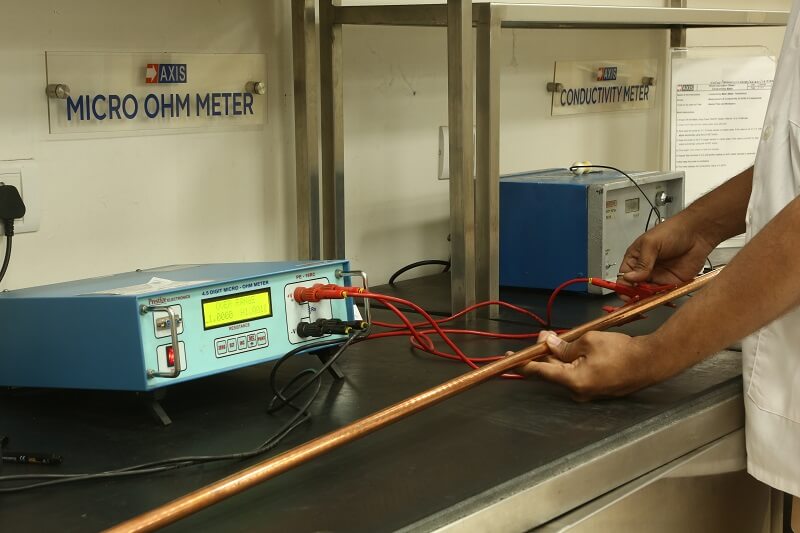
This test measures the electrical resistance of Earth Rods, ensuring they meet the resistivity levels required by International Earthing standards. At our NABL-accredited lab, we use the 4-wire method to measure resistance, which involves injecting current through one pair of test leads and sensing the milli voltage drop across the test object with the other pair.
In this test, you can see the Earth Rod’s resistance at the display unit. Based on the resistance the resistivity needs to be calculated, which shall be within the specified limits as per IEC 62561-2.
In the case of copper-bonded rods, it should be 0.25 micro Ωm (Ohm Meter).
2) Coating Thickness Test
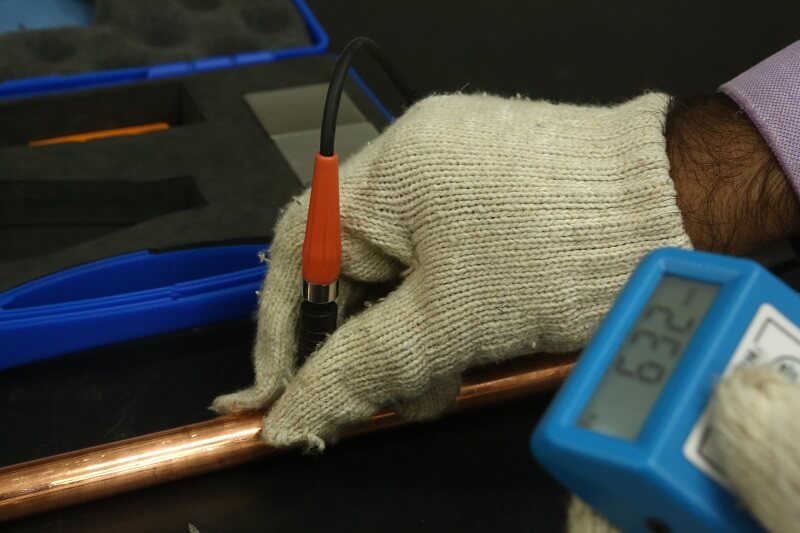
Conducted according to IEC 62561-2:2018, this test ensures that Earth Rods have the minimum required coating thickness. This prevents corrosion, prolongs the rod’s lifespan, and guarantees proper electrical conductivity. The test also verifies the rod’s quality, performance, and compliance with safety standards.
To conduct the test, we use a coating thickness gauge instrument, it calibrates with the master calibrator plate at the time of testing itself and shows the coating thickness reading in microns.
Note – As per IEC 62561-2 and UL 467, the minimum copper coating thickness shall be 254 microns.
3) Bend Test
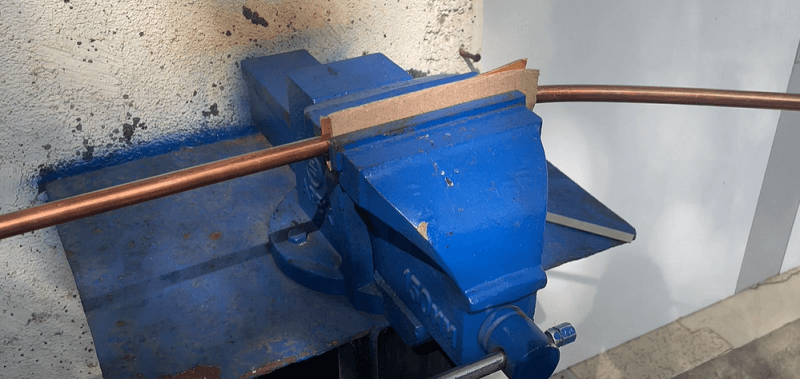
This test evaluates the earth rod’s mechanical strength and flexibility, ensuring it can endure mechanical stress during installation and usage without breaking or losing its integrity. It is crucial for maintaining a reliable grounding system and electrical safety.
The test is performed with the earth rod sample holding between the plate and bending up to the angle of 90°.
Here the rod’s quality is considered superior if the copper coating is intact after the test.
4) Adhesion Test

This test evaluates the bond between the Earth rod’s core material and its protective coating, ensuring the coating remains intact throughout its lifespan. This provides effective corrosion resistance and preserves electrical performance, which is vital for the rod’s safety. On badly manufactured earth rods, you will see the copper coating just peel off during the test.
The test is performed by securing a piece of the earth rod between two plates. These plates are positioned closer together than the diameter of the rod. Next, hammer the earth rod, which directly impacts the copper coating. Following the test, the copper coating should remain adhered to the base metal. In any sections where the coating has peeled, it should still be intact with the base metal.
5) Tensile Test

This test ensures Earth rods can withstand the required tensile load, evaluating their ability to endure axial forces without breaking or deforming. By measuring tensile strength, elasticity, and elongation properties, the test guarantees the rod’s structural integrity during installation and service.
Here the earth rod test piece is fixed on the Universal Tensile Testing machine, and then pull force is applied to the rod. Note, that the tensile strength shall be within the specified limits as per IEC 62561-2. You can have a look at the limits in this table.
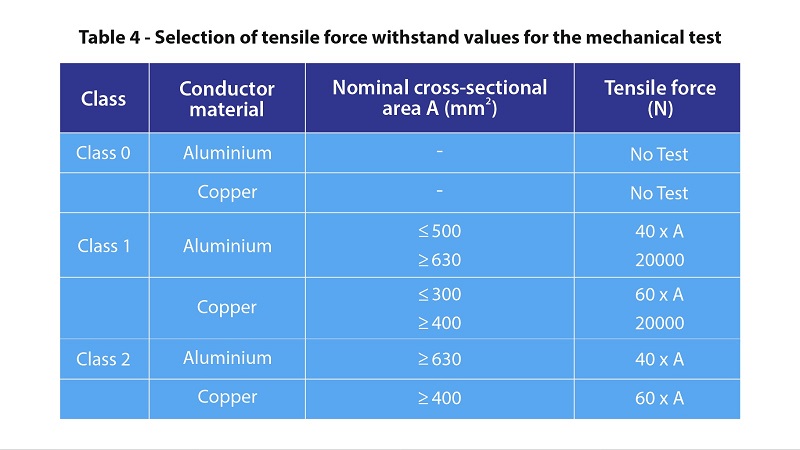
How are these tests conducted?
Here’s a video showing you the procedures and right methods to perform them.
Why Axis Electricals?
Axis-manufactured earth rods comply with standard IEC 62561-2:2018 and UL 467. We ensure the quality of the earth rod by regular testing for every production lot at the Axiom lab facility. All these tests ensure the earth rods maintain high quality which increases the life span of your earthing system.
These tests are performed at our Axiom Lab in Mumbai, which is accredited by the National Accreditation Board for Testing and Calibration Laboratories (NABL) for ISO 17025-2017 and approved by Underwriters Laboratory (UL). I hope you now have a clear understanding of testing for Earth Rod.
At Axis, we have a large team of engineers who are here to help you in designing and installing your Lightning Protection Systems. Our products have been used in large-scale data centers to everyday residential and commercial buildings.
However, rigorous testing of earth rods is not just a procedure, it’s a fundamental necessity to ensure electrical safety and system reliability. Each test, from resistivity to tensile strength, serves as a crucial checkpoint in verifying that the earth rods meet the highest standards of quality and durability. By committing to these comprehensive tests, we can significantly mitigate risks, protect infrastructure, and safeguard lives. Remember, the integrity of your earth rod installation plays a pivotal role in the overall safety of electrical systems. Therefore, prioritizing these tests is not only about compliance but about upholding a commitment to safety and excellence in electrical engineering.
Thank you for reading the blog, Axis is a leading manufacturer and supplier of Electrical Components to over 80+ Countries. Talk to our industry expert by visiting our Contact Us section. You can also watch our videos by our experts – click here.

